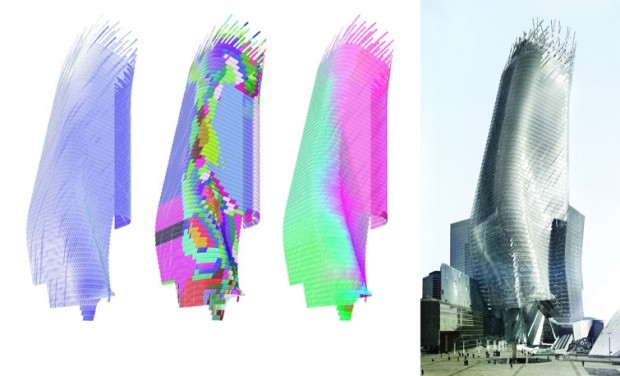Malwarez from alex dragulescu on Vimeo.
MALWAREZ // ALEX DRAGULESCU
Malwarez by Aalex Dragulescu is a software based application that takes data input from documented malware instances and generates a visual form from each file. The software algorithm seeks out patterns within each piece of code and then uses those patterns to create three dimensional structure. Each structure is also given animate behavior based on it’s functioning characteristics. The visuals give each pice of malware a type of physicality that reveals their biomimetic core structure. This piece is so strong in that it bridges the gap between the digital and the biologically present. Each virus gets a unique “persona” through one all encompassing visual. It is genuinely difficult to find any critique with this project, but one big opportunity that still remains unexplored, or at least undocumented is the ability for these forms to become physical objects. The deployment of rapid prototyping technology or other similar means could provide a deeper alternative to a video file or printed image. the idea of visualizing low level computer operations is not new or unique, however the tie to biology and “unique character” given to each exploration is what sets this project apart from others.
image courtesy of http://bluecarpetcollective.blogspot.com
PHARE TOWER // MORPHOSIS
Phare Tower by Morphosis Architects is an example of generative form at a monumental scale. The Phare Tower is a commercial/office high rise located in Paris, France. The project is located on an irregular site with close proximity to the La Defense rail hub. The unique physical and programmatic nature of the site made the use of a parametric design process key for efficiency and execution. The form of the tower was developed through an iterative modeling process driven by scripting. A set of governing parameters was established, and as more information about the site/ program was input into the program, the form and structure of the building would change in an informed manner. The end result was an extremely efficient and informed structure for the building. The process was text book parametric design, however the end form was aggressively shaped by the process. The only real missed opportunity with this work is that all of the parametric design only engaged the performance aspect of the building (structure, views, etc.). Parametric considerations don’t always have to be environmental, they could have engaged social and programmatic aspects as well. The use of parametric tools for performance and optimization has been pervasive amongst the current architectural industry. However, there is a vast amount of opportunity for this type of parametric modeling to engage social data as well.
